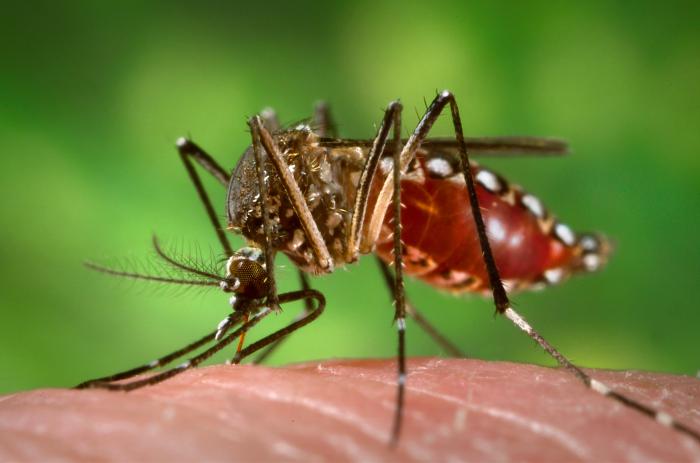 Last week, in What We’re Reading, I recommended a recent Carl Zimmer article in The New York Times, “Bacteria-Infected Mosquitoes Could Slow Spread of Zika Virus.” The article drew my eye because it described a new application of the research of Scott O’Neill, researcher and Dean of the Faculty of Science at Monash University in Melbourne. I heard O’Neill speak a few years ago and his talk was so clear, so riveting, and frankly, so inspiring, that I remember it vividly. Also—it had the coolest graphics! O’Neill’s story was so compelling that I’m not surprised other researchers have picked up the idea and are putting it to use in a new context, as Zimmer’s piece explains. What was so good about O’Neill’s talk? Well, it had a number of terrific messages:
Last week, in What We’re Reading, I recommended a recent Carl Zimmer article in The New York Times, “Bacteria-Infected Mosquitoes Could Slow Spread of Zika Virus.” The article drew my eye because it described a new application of the research of Scott O’Neill, researcher and Dean of the Faculty of Science at Monash University in Melbourne. I heard O’Neill speak a few years ago and his talk was so clear, so riveting, and frankly, so inspiring, that I remember it vividly. Also—it had the coolest graphics! O’Neill’s story was so compelling that I’m not surprised other researchers have picked up the idea and are putting it to use in a new context, as Zimmer’s piece explains. What was so good about O’Neill’s talk? Well, it had a number of terrific messages:
- Curiosity-driven science, however basic or obscure, can have surprisingly practical applications
- Cleverly applied scientific insights can save lives
- Knowing about evolution helps you design better eradication strategies
- Scientists can and should involve communities in risk-based decision-making
- Scientific talks can be accessible to a wide audience without compromising the science
Let me elaborate point by point (or you can skip the rest of this post and just click on the incredibly cool video on O’Neill’s Eliminate Dengue program website, which makes its own points better than I can):
Here are some observations from basic research that in isolation might seem trivial or insignificant: Lots of insects are infected with a certain kind of bacteria, called Wolbachia. In some cases, infected insects have shorter life spans than non-infected ones, but they also often demonstrate immunity or decreased susceptibility to certain viruses. Finally, Wolbachia infection spreads rapidly through insect populations because it affects reproductive success. Uninfected females can only reproduce with uninfected males; if they mate with an infected male, their eggs don’t hatch. Infected females can mate with both uninfected and infected males and all of the offspring will carry Wolbachia.
Pause for evolutionary insight: There’s a reason Wolbachia is so spectacularly successful evolutionarily. It doesn’t kill its host (or even make it sick), so infection is not subject to negative selective pressure. It acts at a very powerful point in the life cycle: reproduction itself. Eggs with it hatch, eggs without it don’t. Bonus, it appears to protect the insect against various viral infections, so infected insects may have an advantage over uninfected ones.
But wait a second: didn’t you say infection results in shorter life spans? Wouldn’t that be an evolutionary disadvantage? Good question, grasshopper! But no. Since the insects can still reproduce, the shorter life span isn’t a disadvantage. In fact, if the older insects die off, there are more resources for the younger ones.
- Cleverly applied scientific insights can save lives
Many human infectious dise ases are transmitted by insects. For example, the dengue family of viruses, spread by mosquitos, causes 96 million cases of dengue fever every year. Remember how lots of insects are infected with Wolbachia? Well, it turns out that the particular strain of mosquito, Aedes aegypti, that carries several human disease viruses is not one of those insects. Normally, it doesn’t carry Wolbachia. But what if it did? Would that make it resistant to the dengue virus, for example? Scott O’Neill and his team decided to find out. How did it turn out? You’ll have to wait for part 2.
ases are transmitted by insects. For example, the dengue family of viruses, spread by mosquitos, causes 96 million cases of dengue fever every year. Remember how lots of insects are infected with Wolbachia? Well, it turns out that the particular strain of mosquito, Aedes aegypti, that carries several human disease viruses is not one of those insects. Normally, it doesn’t carry Wolbachia. But what if it did? Would that make it resistant to the dengue virus, for example? Scott O’Neill and his team decided to find out. How did it turn out? You’ll have to wait for part 2.


